To prove our point, we’re taking a closer look at body ideals over the last 100 years—which shows that, as they say on Project Runway, “In fashion, one day you’re in, and the next day you’re out.”
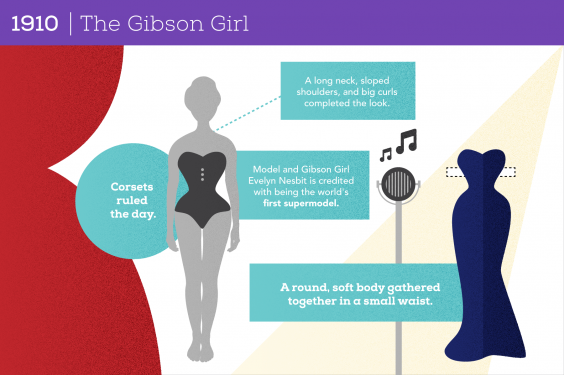
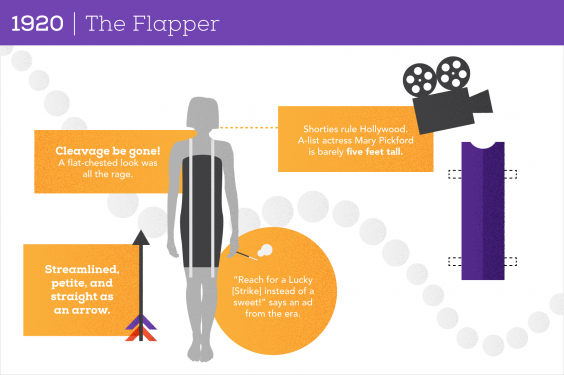
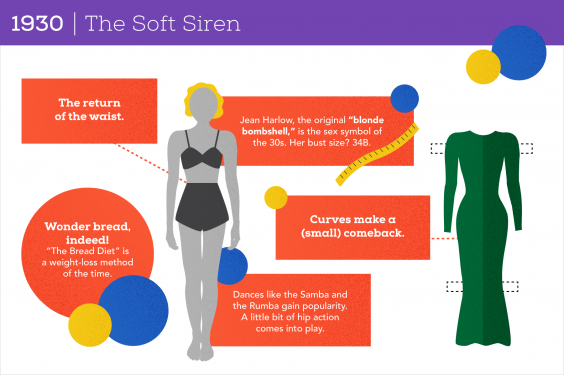
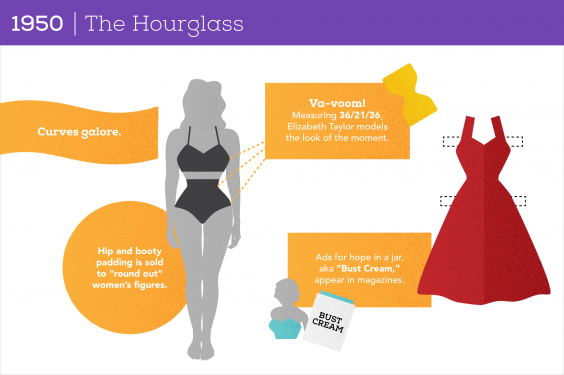
"Welcome to the era of the hourglass. In the 1950s, the ideal body type reaches Jessica Rabbit proportions. After the angularity of the war era, a soft voluptuousness was prized above all else. Ads of the time even advised “skinny” women to take weight-gain supplements like Wate-On to fill out their curves. Playboy magazine and Barbie were both created in this decade, echoing a tiny-waisted, large-chested ideal. Fashions also showcased this body type with the rounded shapes of sweetheart necklines and circle skirts."
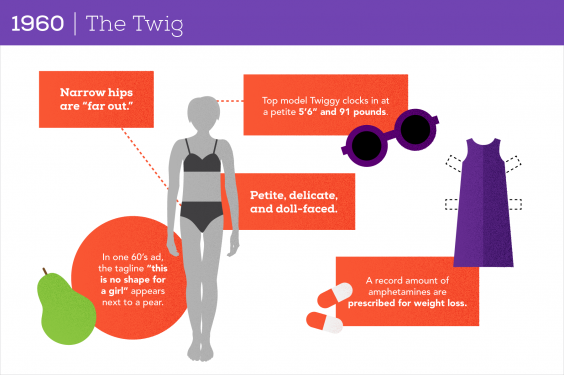
"The swinging 60s brings the pendulum back in the other direction. Thin is in. And Jessica-Rabbit proportions are out. The look is now fresh-faced, girlish, and androgynously trim. Models like Twiggy and Jean Shrimpton (aka “The Shrimp”) represented a new ideal: doll-faced, super slender, and petite. The clothing supports this look: shrunken shift dresses remove the cinched waistline, and fashion demands of a smaller bust and slim hips. (Sound familiar? It’s the same dramatic swing we saw from Gibson girl to flapper.)
More and more women are going girdle-free and embracing a less constricting wardrobe. The trade-off? Now that slim, flat-stomached look must be achieved through diet. Right on cue: Enter Weight Watchers, founded in 1963."
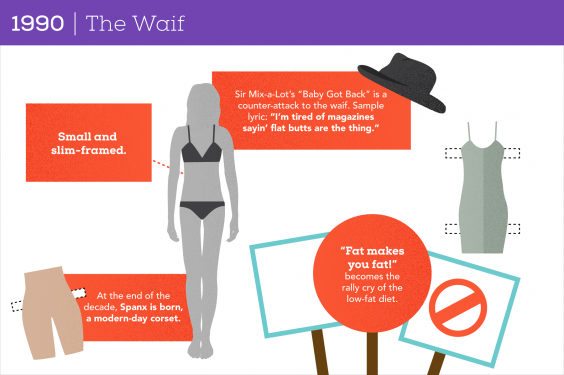
"Honey, we shrunk the supermodel. Kate Moss ushers in the era of the waif. Naysayers also dub it “heroin chic” for the gaunt look associated with Seattle’s grunge music scene. At 5’7” Moss is undeniably petite for a model and thin, even by industry standards. It’s a firmly unathletic look and a reaction to the Amazonian, uber-fit woman of the 80s.
Slouchy jeans, oversized fraying sweaters, and even unisex fragrances (CK One, we’re calling you out) all support the petite and androgynous waif look. Hollywood also embraces the look. A-list 90s actress Winona Rider is so petite, costar Ben Stiller exclaims, "She's like a little figurine for the coffee table!"
See more with more explanations @ Greatist